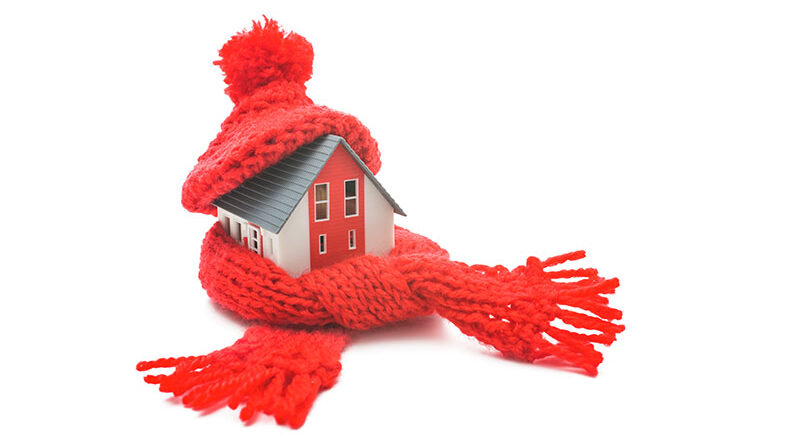Winterize Now
Tackling a few home projects now can save you money later
By Deborah Jeanne Sergeant
Winter may still feel a long time off but some home maintenance tasks are easier and less expensive to do now. Why put it off and struggle to do these in the cold? Plus, the demand for supplies and technicians spikes once cold weather hits.
In addition to removing or covering window air conditioners, look for other places where you can lose energy from your home.
“Make sure windows are latching,” said Jeff Flaherty, owner of Wise Home Energy in Rochester. “A lot of people open and close windows for fresh air. The latching mechanism helps engage all the seals around the window. If you latch the windows, it keeps the energy in.”
Feel for cracks around windows and doors, as well as around the hatch or door leading to the attic.
“If there’s dust around the seams, that means air is flowing through it,” Flaherty said. “It’s an energy loss area.”
Consider replacing any old windows or doors with energy efficient models. The US Department of Energy estimates that energy loss through windows accounts for 25% to 30% of all residential heating and cooling energy use. You could also replace calk, weather stripping and/or seal windows with clear film to reduce drafts. Use film around unused doors as well.
Consider upgrading your home’s insulation. According to www.homestratosphere.com, “wall insulation can reduce a home’s heat loss by 67%, while attic insulation can lead to a 40% decrease in heating and cooling costs.”
Energy Saver (www.energy.gov/energysaver/insulation) offers tips for finding the right kind of insulation and where your home needs the most insulation.
“Look at having an energy assessment,” Flaherty said. “They’re typically low or no cost in New York. They can identify some simple things specific to your home and bigger things to prioritize for a longer-term plan.”
Your furnace’s efficiency also matters. Flaherty encourages every homeowner to service their heating equipment annually. Change the filter and have a technician look it over for any other service it could require. Have a professional clean and examine your chimney, too.
Outside your home, check the ground for areas that collect standing water.
“As water pools around the home, we want it to flow away from the home,” Flaherty said. “It’s considered a mold, health and safety issue for when drainage can cause problems in spring.”
Consider changing the grading around your house so rain flows away from the foundation; ensuring gutters and downspouts work properly and improving drainage to your yard so water has someplace to go.
Your landscaping needs other attention before winter. To avoid costly damage, remove any branches that could fall on your house in a storm.
When it is time to mow your lawn the last time, “mow it down to two inches,” said David Teel, owner of Weed Man-Rochester, LLC in Macedon. “Apply slow-release granular fertilizer in fall.”
Instead of bagging the grass clippings as you mow, let the mower mulch the grass and fallen leaves and distribute them as free fertilizer all over the lawn.
Avoid pruning trees and shrubs in the fall, as that can push vegetation to try to grow just as it should be winding down. If you have immature trees and shrubs, consider tying some of their branches together to help prevent breakage.
Remove any weeds and annual plants from the flower beds and garden to reduce the risk of plant diseases and so that these areas will be ready to go once the weather warms up. If your perennial flowers have proliferated and you notice bunching, you should separate them so each retains sufficient roots. That will give your flowers more even distribution throughout the flowerbed. Spread mulch or compost over your flowerbeds.
If you are through with watering outside vegetation, disconnect and drain water hoses and store them inside. Turn off the indoor water valve to outside faucets, the main valve to the sprinkler system and the automatic controller. Cover the outdoor faucets with hose bib covers.

